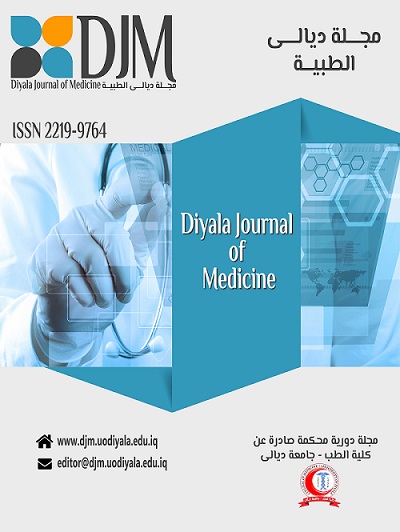Abstract
Background: Surgical obesity treatment is difficult for both surgeons and
patients. The three main categories of bariatric surgery procedures are
malabsorptive, restrictive, or both in combination. Intragastric balloon
(IB) is an easily applicable restrictive interventional and nonsurgical
strategy for obese patients, and the surgical procedure known as
laparoscopic sleeve gastrectomy (LSG) is frequently used to help obese
patients decrease weight.
Objective: To assess and compare these two restrictive approaches.
Patients and Methods: A prospective study of 138 LSG patients was
conducted, (n=82) and IB (n=56) between 1st January 2016 to 31st
December 2021 in private hospitals in Erbil, Iraq. The study
retrospectively evaluates patients' demographic information, changes in
total body weight (TBW), changes in body mass index (BMI), and
percentage of excess weight loss (%EWL), morbidities and change of
comorbidities during a year of follow-up, at months 1, 3, 6, and 12 after
surgery. Comparative analysis was undertaken for the follow-up results
after 6 and 12 months.
Results: In the IB group, 12 patients did not tolerate insertion, leaving 56; in
the LSG group, 82 patients completed treatment. In terms of age (p=0.121),
gender (p=0.242), and BMI (p=0.078), there were no statistical differences
between the IB and LSG groups. The LSG group achieved statistically
significant superior treatment outcomes in terms of changes in TBW, BMI,
and %EWL.
Conclusion: Both LSG and IB are beneficial in the short term for helping
obese patients lose weight. IB has the benefit of being performed as an
outpatient procedure with less complications, but it is less successful in
helping people lose weight than LSG. The best options for various patient
groups in terms of clinical outcomes and health system effectiveness must
be determined through prospective, randomized control studies.
patients. The three main categories of bariatric surgery procedures are
malabsorptive, restrictive, or both in combination. Intragastric balloon
(IB) is an easily applicable restrictive interventional and nonsurgical
strategy for obese patients, and the surgical procedure known as
laparoscopic sleeve gastrectomy (LSG) is frequently used to help obese
patients decrease weight.
Objective: To assess and compare these two restrictive approaches.
Patients and Methods: A prospective study of 138 LSG patients was
conducted, (n=82) and IB (n=56) between 1st January 2016 to 31st
December 2021 in private hospitals in Erbil, Iraq. The study
retrospectively evaluates patients' demographic information, changes in
total body weight (TBW), changes in body mass index (BMI), and
percentage of excess weight loss (%EWL), morbidities and change of
comorbidities during a year of follow-up, at months 1, 3, 6, and 12 after
surgery. Comparative analysis was undertaken for the follow-up results
after 6 and 12 months.
Results: In the IB group, 12 patients did not tolerate insertion, leaving 56; in
the LSG group, 82 patients completed treatment. In terms of age (p=0.121),
gender (p=0.242), and BMI (p=0.078), there were no statistical differences
between the IB and LSG groups. The LSG group achieved statistically
significant superior treatment outcomes in terms of changes in TBW, BMI,
and %EWL.
Conclusion: Both LSG and IB are beneficial in the short term for helping
obese patients lose weight. IB has the benefit of being performed as an
outpatient procedure with less complications, but it is less successful in
helping people lose weight than LSG. The best options for various patient
groups in terms of clinical outcomes and health system effectiveness must
be determined through prospective, randomized control studies.
Keywords
Intragastric balloon.
laparoscopic sleeve gastrectomy
Obesity
